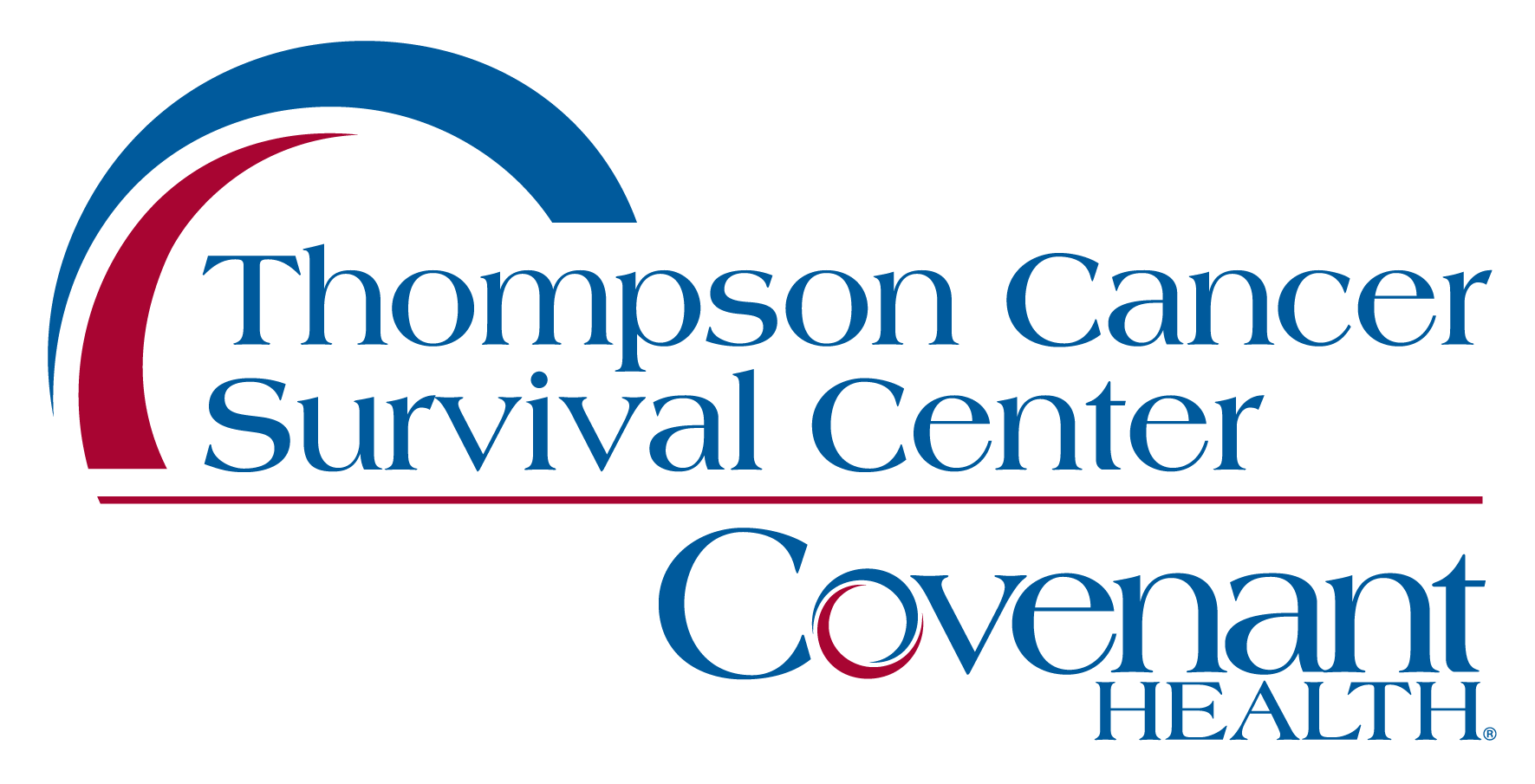Esophageal Cancer

Esophageal cancer forms in tissues lining the esophagus and, if not detected and treated, spreads outward through the other layers. When strong digestive acids escape from the stomach into the esophagus they can cause a condition known as gastroesophageal reflux disease. Although this usually causes a burning sensation, sometimes there are no symptoms.
When the condition persists for a long time the cells lining the esophagus can mutate into glandular cells like those inside the stomach which are resistant to the acid. This condition, known as Barrett’s esophagus, creates a highly increased risk of esophageal cancer. Each year more than 15,000 cases of the disease are diagnosed in the United States.
Types of Esophageal Cancer
Squamous Cell
Squamous Cell, or epidermoid, carcinoma is cancer of the flat cells which line the esophagus. Squamous Cell carcinoma is the most common kind of esophageal cancer among African-Americans.
Adenocarcinoma
Adenocarcinoma is cancer of the glandular tissue in the lower part of the esophagus. In the United States, Adenocarcinoma is more prevalent in Caucasians.
Other Cancers of the Esophagus
Lymphoma, sarcoma, small-cell carcinoma and spindle-cell carcinoma all occur in the esophagus. In addition, cancer which originates in other parts of the body may spread to the esophagus. When this happens, it is not esophageal cancer, but a metastatic cancer of the esophagus. These metastasized tumors have the same kind of cancer cells – and similar characteristics – as the original tumor.
Esophageal Cancer Risk Factors
Risk Factors That Can’t Be Controlled
- Age
- Most people who develop esophageal cancer are 45 or older.
- Gender
- Men get esophageal cancer much more often than women.
- Race
- Squamous Cell attacks African-Americans proportionately more often than it does Caucasians. Adenocarcinoma attacks Caucasians proportionately more often than it does African-Americans.
- Radiation following mastectomy
- Women who have had a mastectomy followed by radiation therapy have a slightly increased risk of developing esophageal cancer in 10 to 15 years.
Controllable Risk Factors
- Tobacco Use. Smoking cigarettes, cigars or a pipe or chewing tobacco increases the risk of developing esophageal cancer. The risk increases significantly for people who use tobacco and drink alcohol heavily. Smoking increases the risk significantly.
- Heavy Alcohol Drinking. Long-term, frequent heavy drinking irritates the esophageal lining and is the main cause of squamous-cell esophageal cancer.
- Untreated chronic acid reflux disease. Untreated acid reflux disease can irritate the lining of the esophagus can lead to Barrett’s esophagus, a condition in which glandular cells which are susceptible to malignancy form in the lower esophagus.
- Diet. A diet low in fruits and vegetables – especially one low in vitamins A, B1 and C, beta carotene and selenium can contribute to developing esophageal cancer.
- Overweight. A weight of 20 pounds or more over the ideal can contribute to developing esophageal cancer.
- Silica Dust. Long-term exposure to silica dust can increase the risk of esophageal cancer. Quarry workers, miners and construction workers who work with granite, sandstone, brick, concrete and tile may be exposed to silica dust.
Esophageal Cancer Warning Signs
- Painful or difficult swallowing, often caused by a spasm in the esophagus.
- Unexplained weight loss
- Burning pain behind the breastbone, especially after eating or when lying down.
- Hoarseness, cough or sore throat.
- Indigestion and heartburn.
- Wheezing or difficulty breathing
Esophageal Cancer Screening
People at risk for esophageal cancer (especially those with Barrett’s esophagus or tylosis) should be screened regularly. A screening every two to three years is often recommended for people without cell abnormalities. People with cell abnormalities should be screened more frequently.
Endoscopy
A fiber-optic endoscope is passed down the throat to send images to a monitor. The images are examined to determine if there are any suspicious areas. The endoscope can also take small tissue samples for microscopic analysis.
Biopsy
Suspicious tissues from the esophagus are retrieved and examined microscopically to determine if cells are cancerous. The tissue sample is usually taken during an endoscopic examination of the esophagus.
Barium-Swallow X-Rays
A series of X-rays of the esophagus taken after the patient has swallowed barium, a liquid which coats the lining of the esophagus so it shows up clearly in the X-ray images.
A fiber-optic endoscope is passed down the throat to send images to a monitor. The images are examined to determine if there are any suspicious areas. The endoscope can also take small tissue samples for microscopic analysis.
Esophageal Cancer Diagnosis and Staging
Computerized Tomography Scan
A CT (or cat) scan can provide a highly-detailed image of the esophagus. CT scans are a series of X-rays combined by a computer in a cross-section view. They can be performed with injected contrast material to highlight esophageal tissue and suspicious masses. Since the basic imaging mechanism of a CT scan is X-rays, patients receive a low dose of radiation during the procedure.
Positron Emission Tomography Scan
Positron-emission tomography (or PET) scans are three-dimensional images of the metabolic functioning of body tissues. PET scans can be used to determine the type of cells in a mass and to detect whether or not a tumor is growing. Patients receiving PET scans are injected with a radioactive drug with about as much radiation as two chest X-rays.
Bronchoscopy
A bronchoscopy is an endoscopic examination of the trachea and bronchial tubes to determine how far cancer has spread.
Endoscopic Ultrasound
Endoscopic ultrasound is an extremely accurate way to determine how far esophageal cancer has spread. In this procedure a thin probe passed through an endoscope into the esophagus generated sound waves which penetrate into tissue. The echoes are captured and converted into highly detailed images by a computer.
Thoracoscopy
A surgical examination of the chest to determine if esophageal cancer has spread into them. A thoracoscope is inserted into a small incision between the ribs. The thoracoscope can transmit images and retrieve tissue samples for analysis.
Laparoscopy
A minimally-invasive surgical procedure in which a laparoscope is inserted through small incisions into the abdomen to visually inspect organs and retrieve tissue samples
Esophageal Cancer Staging
- Stage 0: Cancer only in the inner layer of the esophagus. Stage 0 is also called carcinoma in situ.
- Stage I: Stage I esophageal cancer has spread from the innermost layer to the next layer of tissue in the wall of the esophagus.
- Stage IIA: Stage IIA esophageal cancer has spread to the esophageal muscle or the outer wall of the esophagus.
- Stage IIB: Stage IIB is cancer of any of the three inner layers of the esophagus which has also spread to nearby lymph nodes.
- Stage III: Stage III is cancer which has spread to the outer wall of the esophagus and nearby tissue or lymph nodes.
- Stage IVA: Stage IVA is esophageal cancer which has spread to lymph nodes either near the original tumor or in other parts of the body.
- Stage IVB: Stage IVB is esophageal cancer which has spread to distant lymph nodes or organs.
- Recurrent Esophageal Cancer: Recurrent esophageal cancer is cancer which comes back after being (or seeming to be) eliminated. Recurrent esophageal cancer can come back in the esophagus or any other part of the body.
Esophageal Cancer Treatment
The choice of therapy or combination of therapies used to treat esophageal cancer depends upon the stage of the disease, the age and physical condition of the patient and other factors. The five principal types of treatment are:
Surgery
Esophagectomy
This treatment is frequently used for early-stage esophageal cancer. The diseased portion of the esophagus and any effected lymph nodes are removed and the remaining portion of the esophagus is reconnected to the stomach. When the removed section is too long to permit reconnection, a section of the large intestine may be grafted in between the stomach and the remaining esophagus.
Esophagogastrectomy
When esophageal cancer has spread to the stomach, an esophagogastrectomy, in which the diseased part of the esophagus, the upper part of the stomach and nearby lymph nodes are removed. The remaining part of the stomach is pulled up and reattached to the esophagus. A section of large intestine may be grafted between the stomach and esophagus if necessary.
Radiation Therapy
Radiation may used either before surgery or in combination with chemotherapy as the primary treatment. Radiation therapy for esophageal is primarily done with a series of external beam treatments, but brachytherapy, in which pellets of radioactive material are implanted near the tumor is sometimes used.
Intensity-Modulated Radiation Therapy
Thompson was one of the first facilities in the world to treat patients with intensity modulated radiation therapy. Since 1998 more than 1,000 patients have received IMRT treatment at Thompson. In IMRT the multileaf collimator reshapes the treatment field between individual doses of radiation for maximum dosage to the tumor with minimum damage to surrounding healthy tissue.
This advanced technology’s exact tumor mapping; image-registration patient positioning system; and helical-pattern, intensity-modulated, collimator-controlled radiation beam allow maximum doses to be focused on the area to be treated with minimum damage to surrounding tissue.
HDR brachytherapy
In high-dose-rate brachytherapy radioactive pellets are implanted into the tumor. The benefits of the technology are significant. Treatment time is reduced, affected areas receive a maximum dose and surrounding healthy tissue is spared.
Thompson at Methodist pioneered high-dose-rate brachytherapy in 1998, and has done more than 700 procedures with this technology. The HDR brachytherapy team here is the most experienced in the area.
Thompson’s Downtown facility has the area’s first dedicated brachytherapy suite. The patient’s scan is made and all preparation for treatment is done right in the HDR brachytherapy suite. Since the patient doesn’t have to be transported from a separate CT room to the treatment area, the placement of the radioactive pellets is more precise. And with a dedicated suite, treatment can always be scheduled exactly when needed
Chemotherapy
Chemotherapy is used to shrink tumors before surgery and in combination with radiation therapy as the principal treatment when surgery or photodynamic therapy are not good options.
Photodynamic Therapy
Photodynamic therapy is used to treat early-stage esophageal cancer. The Laser Center at Thompson is a world teaching center for this technique, which uses a light-activated drug, and laser light to destroy abnormal cells. The PDT balloon needed to deliver an effective, controlled dose of laser light to the area of interest was developed at the Thompson Laser Center, and many physicians and others who participated in the study leading to FDA approval of the procedure were trained at this facility.
Electrocoagulation
Electrocoagulation kills esophageal cancer cells with electricity.

